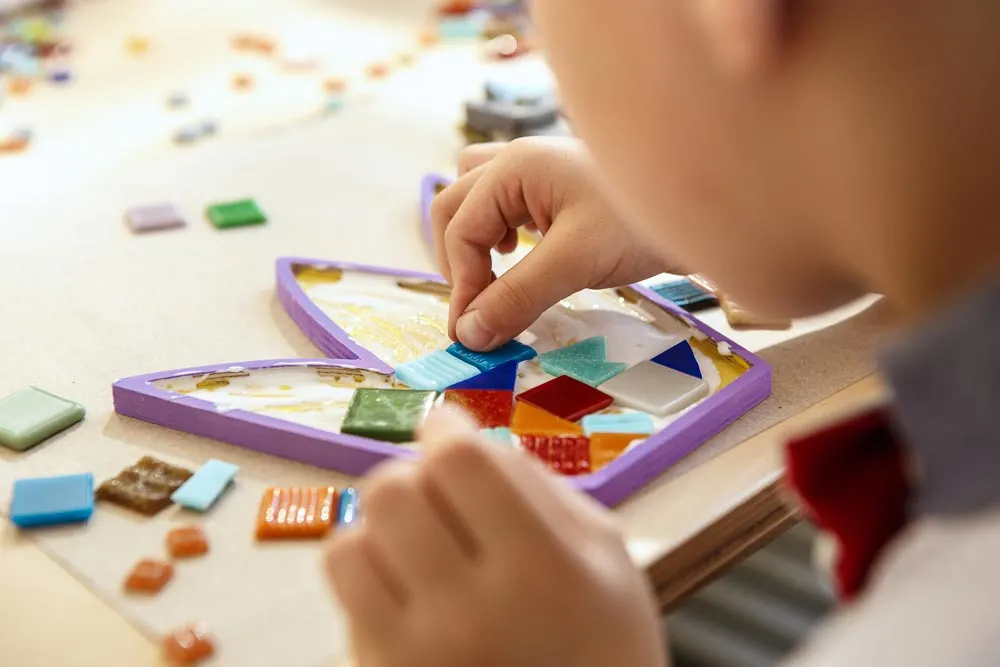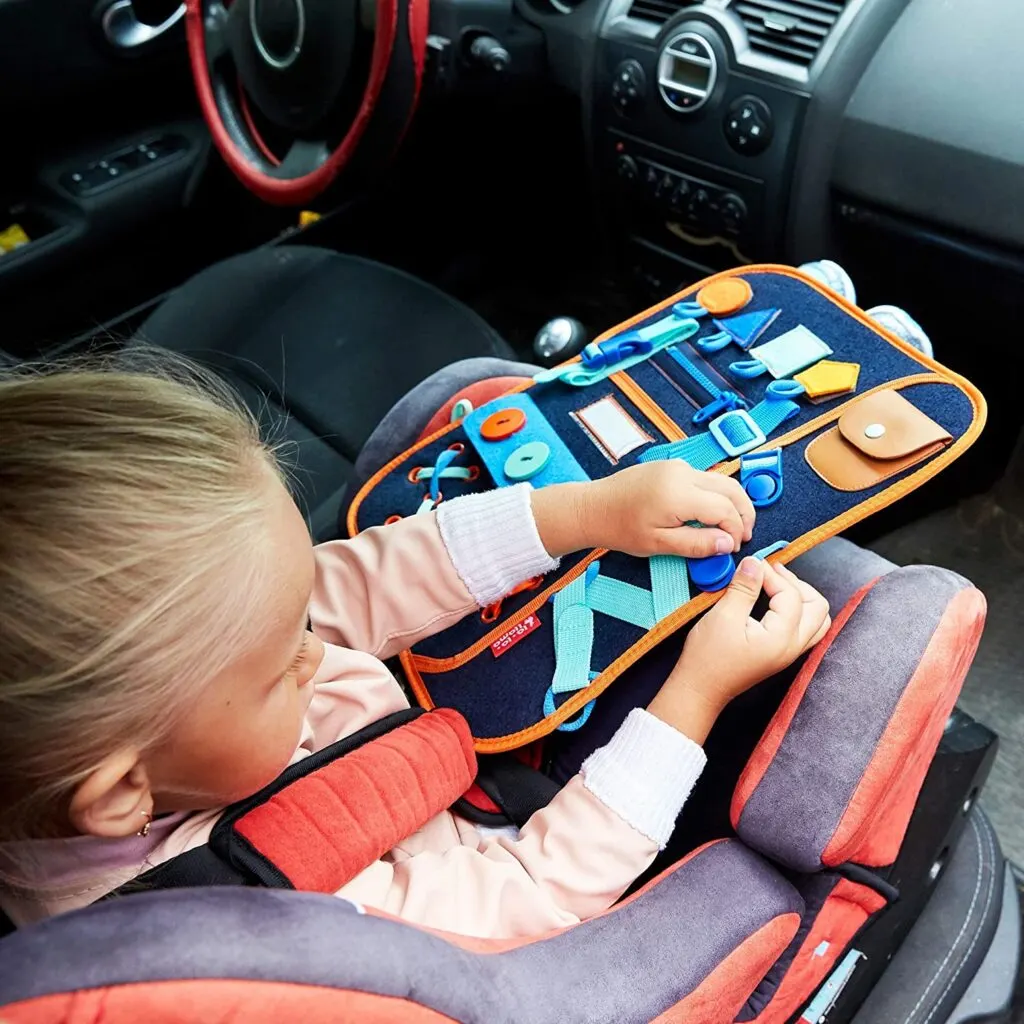What’s inside this article: An overview of fine motor skill development, including what are fine motor skills, signs of fine motor delay, and 30 play-based activities and toys to support your child’s fine motor development.
Disclaimer: This post contains affiliate links.

Fine motor skills develop gradually, beginning in infancy. Young children develop fine motor by engaging in play, practicing simple tasks, and practicing self-care skills like dressing.
When these skills are lacking, it’s not always noticeable to parents because much of the work is internal and musculature. For example, it might be an obvious milestone when a baby begins to feed themselves, but the first time they play with play-doh might not seem as monumental.
Building strong fine motor skills is essential to everyday function for all humans. Finding out how to build up fine motor skills begins with understanding how they work. So, what exactly are fine motor skills?
What are Fine Motor Skills?
Fine motor skills are movements that require the use of small muscles in the hands and wrists.
These movements allow us to do things like hold a pencil, use eating utensils and type on a keyboard. They require complex coordination between the brain and muscles and are crucial for day-to-day life.
Children need fine motor skills for daily activities like buttoning a shirt or using a spoon. It’s important for toddlers and children to get lots of play-based practice using the small muscles in their hands and wrists to develop these skills.
How Does Fine Motor Development Impact Children?
Children love to explore and create. Whether it’s creating sculptures out of clay or making a building block masterpiece, kids are hardwired to create and explore with their senses. Allowing children to play and use their imagination is one of the best and easiest ways to build fine motor skills.
For many children, fine motor skills often develop without special focus or attention. However, these skills don’t come as naturally to others, and they require extra practice to build their skills.
You may notice your child is struggling when they enter school and you notice it’s hard for them to manipulate scissors, or hold a pencil correctly.
Signs of Fine Motor Delay
The following signs may mean your child has fine motor delay:
- Difficulty gripping objects
- Difficulty self-feeding with utensils like spoons and forks
- Messy handwriting
- Avoiding table activities in school like puzzles, writing, crafts
- Trouble with dressing – buttons, zippers, putting on socks, etc.
- Poor hand-eye coordination
These problems caused by fine motor delay may cause your child to experience increased frustration, avoid tasks, or have feelings of low self-esteem at school.
While no parent wants this for their child, thankfully there are many simple solutions to building fine motor skills.
Ways to Practice Fine Motor Skills at Home

Practicing with your child can be fun for both of you because kids learn best through play.
Plus, engaging in fun activities with children creates a bonding experience for both parent and child and encourages healthy development.
Fine Motor Skills Activities
There are plenty of activities parents and children can do together that offer fine motor skill development. These activities range from tracing to using zippers.
Most of these activities can be done at home with things found around the house, so they are low-cost and don’t require much prep.
- Drawing with pencils
- Playing with sponges (Get your child to transfer water from one bowl to another by filling and squeezing out a sponge)
- Using safety scissors
- Using tongs
- Sorting small objects like beads, pasta, water beads, lego
- Pulling string or ribbon through cardboard
- Making art by gluing noodles, buttons, pompoms, or beads to paper
- Stacking objects
- Pushing buttons on an old phone
- Painting with paintbrushes or finger painting
- Using play-doh or putty (Encourage your child to squeeze and pull and putty, this provides proprioceptive input)
- Making jewelry with ribbon or pipe cleaner and beads
- Tracing letters, numbers, shapes, and lines, or connect the dots
Fine Motor Skills Toys
Fine motor skill toys have exploded on the market in recent years. There are so many different options out there. Here are some of the fine motor skills toys that I recommend.
- Any Lego building set
- Funny Faces
- Fisher-Price Laugh & Learn Toy Piggy Bank
- Magna-Tiles
- Paint-by-Sticker Activity Books
- Trace Ace Scissor Skills Set
- Flower Building Set
- Avalanche Fruit Stand
- The Craft Vault (or similar)
- La La Llama Learning Backpack

Finger Play
As mentioned before, children learn best during play.
Playing creates pathways in the brain and repetition solidifies those pathways.
When children sing the same songs over and over or say rhymes, it’s because they’re learning. Incorporating fingerplays and songs with motions is a great way to improve gross motor skills, fine motor skills, spatial awareness, and phonological awareness.
Try out these songs and fingerplays encourage fine motor development:
- The Itsy Bitsy Spider
- Open Shut Them
- Baby Shark
- The Goldfish Song
- Wave Your Scarf
- Banana Dance
- Here is the Beehive
Fine Motor Self-Care
Teaching a child to care for themselves is part of raising an independent adult. Things like combing hair, keeping clean, and feeding themselves are all things children start learning to do after their first year.
Getting your child to practice these activities even if they aren’t done well is important for fine motor development.
- Brushing teeth
- Washing face
- Applying lotion
- Making simple recipes (Like peanut butter and jam sandwich, or cereal)
- Dressing in the morning
- Combing hair
- Self-feeding

Noticing your child’s strengths and weaknesses will present an opportunity to try new things with them. If you notice your child has signs of fine motor delay, use toys and fun activities to practice these skills. It should be fun, and not feel like work for you or your child.
Enjoy time spent playing, learning, and growing with your child.
If you’re concerned about your child’s fine motor skills or aren’t seeing improvements through play-based activities, express your concerns to your child’s developmental pediatrician or occupational therapist. They may need additional intervention to help develop their fine motor skills.
